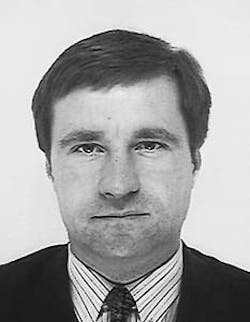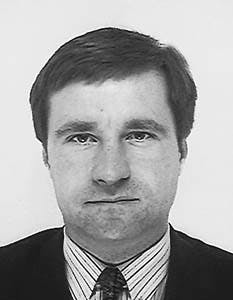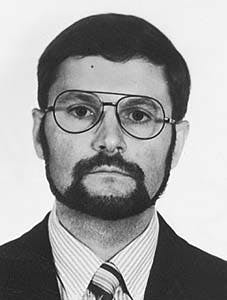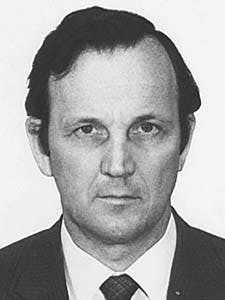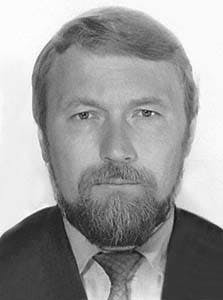Jet pump feeds corrosion inhibitor in Russian waterflood
I.S. YudenThe Russian company Orenburgneft JSC tested a proportioning jet pump for injecting corrosion inhibitor into the water injection system at its Tananykskoye waterflood.
JKX Oil & Gas
Guildford, U.K.Y.A. Sazanov, V.N. Yeliseev, B.A. Malov
Orenburgneft JSC
Moscow
The jet pump has no moving parts and, therefore, provides an hermetic system with zero emissions of pumped and working fluid.
This pump reduces weight, dimensions, and costs compared to mechanical pumps.
Orenburgneft, with the U.K. company JKX Oil & Gas plc., designed the jet proportioning pump.
Jet pumping
Fig. 1 [145482 bytes] illustrates the jet pump and the system for injecting corrosion inhibitor (Fig. 1).
High-pressure water injection lines from the water injection pump station provide power fluid for the jet pump nozzle. The inhibitor flows through a heat exchanger and flow controller before being mixed with the power fluid in a receiving chamber.
The dispersed power fluid and inhibitor mixture is drawn out of the working chamber into the low-pressure water supply inlet line for the water injection pumps.
The most important requirement to proportioning pumps is constant flow at different pressures. Fig. 2 [24948 bytes] shows that the inhibitor flow rate, after stabilizing, is independent of power fluid pressure changes. During tests, pump outlet pressure changed between 0.5 and 3.0 MPa (73-453 psi) while nozzle inlet reached 10 MPa (1,450 psi).
Two conclusions from the tests at Tananykskoye are that:
1. The proportioning pump operates hermetically.
2. Efficiency of the inhibitor improves because the pumps create a fine, dispersed mixture of corrosion inhibitor and power fluid.
Pump design
Several problems were solved while designing the jet pump application. One main problem was the conditioning of the working fluid. Solids in the liquid needed to be removed so that they would not block channels in the jet pump.
Filtering elements with small cells were required for treating the liquid. In this case, the filter operated for a long period without maintenance because the filter elements expanded. But to avoid servicing the filter, a larger flow passage was designed.
For the first stage, the nozzle diameter went from 1.6 mm to 1.8 mm and for the blending compartment it was changed from 2.5 to 3.5 mm.
Because of the high pressures and fluid velocity, metal-ceramic alloys were selected for manufacturing the jet elements.
After operating the proportioning jet pump for 6 months, an electronic control system was added to the system (Fig. 3 [127093 bytes]). In this system, inhibitor flows through a controller and a double-positioned, solenoid-operated valve.
A cable connects the electronic control unit to the solenoid-operated valve that has a feedback line to the flow meters on the centrifugal pump discharge line.
During operations, corrosion inhibitor consumption was maintained automatically to 60 g/cu m of fluid. When injection wells were shut in or brought back on, these changes did not influence the inhibitor consumption.
As liquid passes through the flow meter, an electric pulse is generated after every cubic meter of flow. The pulse activates the electronic control unit that transforms the signal to open the solenoid valve. After the valve opens, inhibitor enters the jet pump.
The valve closes automatically, after a specified time, to shut in the inhibitor feed. The time for the valve to remain open is regulated by the electronic control unit that is set to mix a specific amount of inhibitor in each cubic meter of fluid.
Cycle duration depends on the water volume injected and may last from one to several minutes. These cycles do not influence the inhibitor's protective properties because a durable protective film is formed on the injection line IDs over a continuous period.
Even a complete cessation of inhibitor feed for several days does not break the integrity of the protective film.
After successful tests in the Tananykskoye oil field, Orenburgneft installed a jet proportioning pump in the Krasnoyarsk oil field in April 1996.
The Authors
Igor S. Yudin heads the JKX Oil & Gas plc. office in Moscow. He is also general director of the Russian-British joint venture, Caspian Oil Development. He has worked in the oil and gas industry during the past 15 years. Yudin has an MS and Phd in petroleum engineering from Moscow State Oil & Gas Academy.
Yuri A. Sazanov is chief engineer at the technology department of Orenburgneft JSC and is also an assistant professor at the Moscow State Oil & Gas Academy. Sazanov has a PhD in petroleum engineering from Moscow State Oil & Gas Academy.
Vyacheslav N. Yeliseev is assistant general director at Orenburgneft JSC. Prior to this position he was a chief power engineering specialist. Yeliseev has an engineering degree in electric drive and automation of industrial installations.
Boris A. Malov is chief of the oil and gas directorate of Yuzhorenburgneft, which is a part of Orenburgneft JSC. Malov has an engineering degree in technology and complex mechanization for oil and gas development.
Copyright 1997 Oil & Gas Journal. All Rights Reserved.
